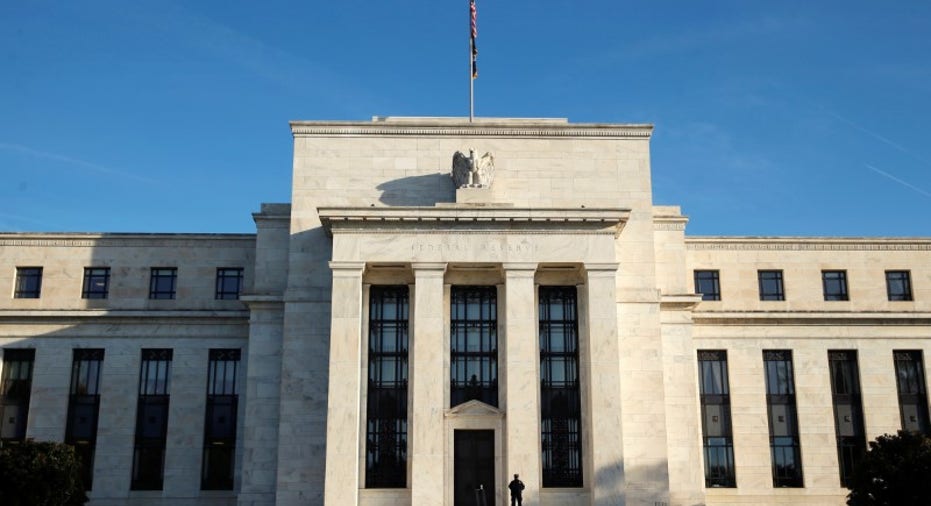Investors Preparing for Fed Hike, Avoiding Bonds and Dividends

The Federal Reserve left interest rates unchanged on Wednesday yet left the door open for a potential hike in December. However many investors have already started preparing for a hike as improving economic data allows the central bank more leeway in tightening monetary policies. Consequently, we witnessed greater redemptions out of real estate investment trusts, fixed-income assets and other dividend-yielding stock exchange traded funds over October ahead of a potential rate hike.
For instance, the iShares iBoxx $ Investment Grade Corporate Bond ETF (NYESArca: LQD) was the most unpopular ETF of October, experiencing close to $1.7 billion in net outflows for the month, according to ETF.com.
Additionally, the iShares iBoxx $ High Yield Corporate Bond ETF (NYSEArca: HYG), which recent saw a record daily outflow, lost $641.9 million in assets, the SPDR Barclays High Yield Bond ETF (NYSEArca: JNK) saw $619.3 million in redemptions and iShares 20+ Year Treasury Bond ETF (NYSEArca: TLT) shrunk by $491.9 million.
Speculative-grade bonds also weakened over the past week, alongside falling oil prices, on renewed concerns that the decline in crude oil could negatively affect the highly leverage energy sector, raising credit risks.
The Vanguard REIT ETF (NYSEArca: VNQ) shrunk by $692.7 million and iShares Dow Jones US Real Estate Index Fund (NYSEArca: IYR) bled $765.4 million on rising rate risks as well. REITs, which traditionally have been popular for their attractive dividend yields, are under pressure. When interest rates rise, REITs’ interest payments go up, so the companies have less cash flow available for dividends. The high dividends in REITs are attractive in a low-rate environment but are less enticing once safer Treasuries show higher rates.
The iShares Edge MSCI Min Vol USA ETF (NYSEArca: USMV) also saw $889.7 million in outflows, which suggests that investors may have shifted out of more defensive positioning as corporate earnings continued to improve.
On the other hand, ETF investors continued to dive into stocks. The PowerShares QQQ (NasdaqGM: QQQ), which follows the Nasdaq-100, attracted $2 billion in net inflows, iShares Core S&P 500 ETF (NYSEArca: IVV) saw $1.8 billion inflows and SPDR S&P 500 ETF (NYSEArca: SPY) added $1.6 billion.
Emerging markets remained a popular play, with Vanguard FTSE Emerging Markets ETF (NYSEArca: VWO) bringing in $1.2 billion and iShares Core MSCI Emerging Markets ETF (NYSEArca: IEMG) adding $960.2 million. While still experiencing high trading activity, the iShares MSCI Emerging Markets ETF (NYSEArca: EEM) has not seen total assets under management fluctuate much for the month, which suggests that traders continued to utilize EEM for day-to-day exposure while long-term investors turned to the cheaper VWO and IEMG options - VWO has a 0.15% expense ratio, IEMG has a 0.14% expense ratio and EEM has a costlier 0.69% expense ratio.
Investors are also diversifying with international developed markets, with the and Vanguard FTSE Developed Markets ETF (NYSEArca: VEA) bringing in $1.4 billion and iShares Core MSCI EAFE ETF (NYSEArca: IEFA) attracting $985.6 million. The two funds track developed European, Australasia and Far East, or EAFE, countries.
The Financial Select Sector SPDR (NYSEArca: XLF), which was the best performing sector of October, experienced $756.6 million in inflows on increased Federal Reserve rate bets. With a steepening yield curve, or wider spread between short- and long-term Treasuries, banks could experience improved net interest margins or improved profitability as the firms borrow short and lend long.
This article was provided courtesy of our partners at etftrends.com.
Full disclosure: Tom Lydon's clients own shares of SPY, LQD, HYG and JNK.